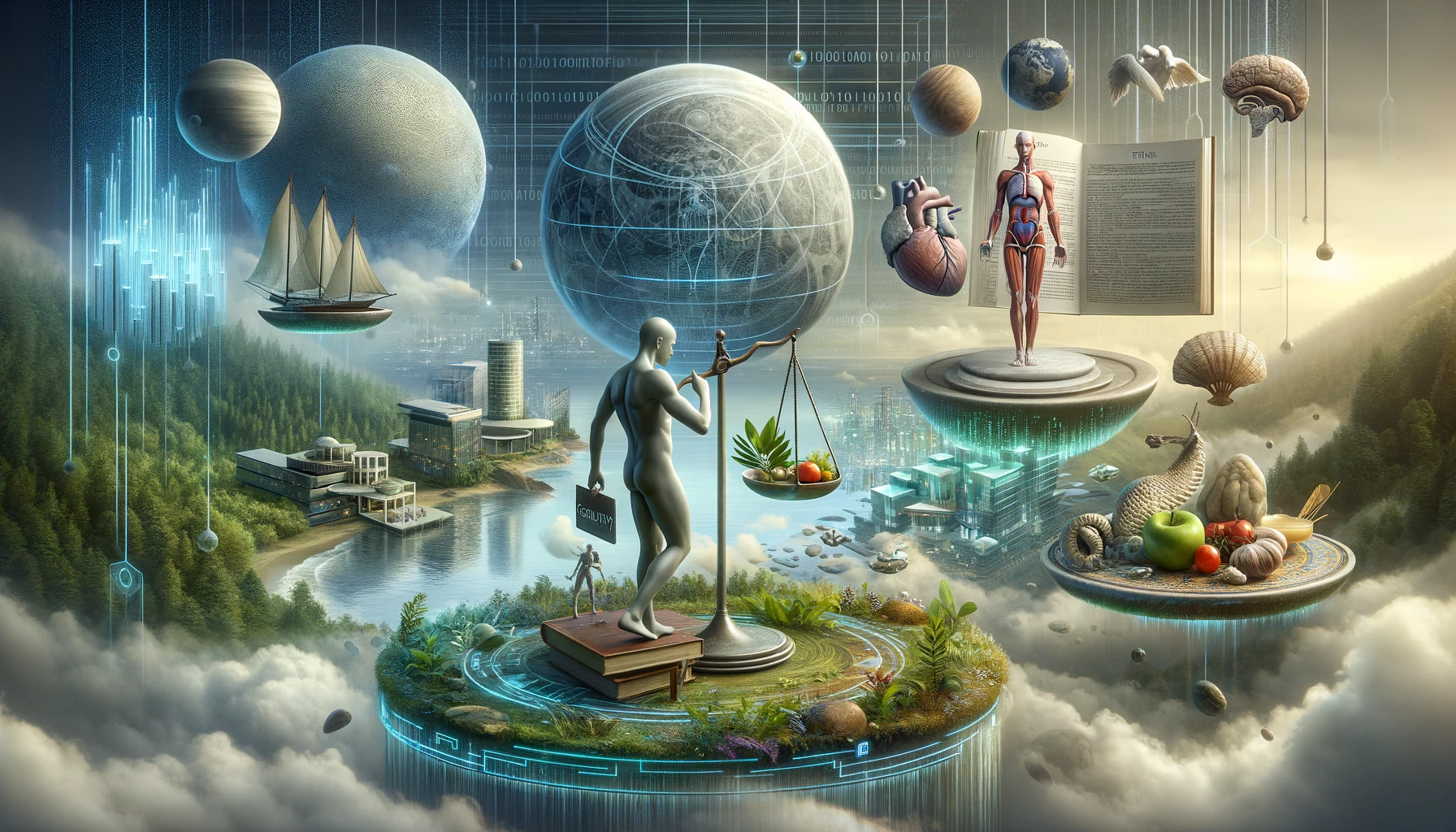In the ever-evolving world of branding, the concept of a "living brand" emerges as a beacon of innovation and responsiveness. A living brand is akin to a sentient being; it possesses the ability to sense, empathize, decide, act, and evolve. It is adept at gathering and processing data to understand and respond to customer needs, recognize emotions, make valuable decisions, and learn from past outcomes to enhance future outcomes.
Living brands excel in real-time performance. They interact with customers based on individual attributes, values, and personalities, thus making the brand experience feel genuinely alive. They leverage digital media, AI, and every possible customer touchpoint to engage in more personalized and dynamic ways.
Living brands embody authenticity in every aspect of their business both internally and externally, showcasing their core values in all operations and interactions. Their strength lies in their values, character, pride in their mission, and relentless commitment to continuous learning and information gathering.
Living brands are characterized by their dynamism. They actively engage with their environment, evolving with social changes and trends. They are not static entities but are akin to ever-evolving creations that strive for progress and inspire others. Sustainability is integral to living brands, recognizing the importance of responsible growth and operations.
Living brands do not operate in a vacuum. They respect the broader context of their existence, connecting with other brands and individuals who share similar missions. They are acutely aware of the political and socioeconomic climate and aim to spark passion in others through education and solution-oriented approaches, often with the goal of making the world a better place.
"A living brand is akin to a sentient being; it possesses the ability to sense, empathize, decide, act, and evolve."
Apple: On the Verge of Becoming a Living Brand
Apple, the world's most valuable consumer technology brand, is on the cusp of transitioning from a coveted device maker to a living brand. This transformation would see Apple continuing to become an even more integral part of people's lives, dynamically responding to their needs and aspirations while ensuring its commitment to sustainability, privacy, and ethical manufacturing.
For instance, the Apple Watch exemplifies this shift. It wakes users with a melody tailored to their sleep quality and stress levels, acting more as a wellness companion than a mere device. However, the Watch still falls short of the living brand ideal due to its need for user input and interpretation, unlike a true living brand that would predict and adapt seamlessly. It's on a trajectory to do this, but it's not quite there.
Apple Fitness+ and HomeKit show strides towards this new era of branding. Fitness+ suggests workouts, and HomeKit is evolving into a smart ecosystem where devices intelligently react to user habits. However, they still lack the deep learning and anticipatory adjustments necessary for a brand to be truly 'living.'
Apple's commitment to sustainability, privacy, and ethical manufacturing aligns with the ideals of a living brand. The challenge for Apple lies in balancing its closed ecosystem with the need for a more open, collaborative approach, that is characteristic of living brands.
To fully embody a living brand, Apple must enhance its ecosystem to be more intuitive and seamlessly integrated into users' lives, ensuring that its suite of products and services anticipates and responds to user needs in real-time.
"Living brands embody authenticity, showcasing their core values in all operations and interactions."
Microsoft: Poised for Transformation
Microsoft is on a transformative journey from being a tech giant to a living brand—a brand that senses, empathizes, decides, acts, and evolves alongside its customers.
Imagine a world where every Microsoft product, from the versatile Teams platform to the immersive Xbox console, is not just a tool or a device but a responsive, intuitive entity. These products would go beyond functionality; they would understand your emotions, anticipate your needs, and adapt in real-time to your changing circumstances. The essence of a living brand lies in this dynamic adaptability, where the brand experience feels alive, pulsating with the rhythm of digital innovation and human insight.
Microsoft's transformation into a living brand is more than just an upgrade in technology; it's a shift in ethos. It's about embedding core values of sustainability, ethical sourcing, and inclusivity into every aspect of its business. This transformation means Microsoft's products wouldn't just serve users; they would learn from them, grow with them, and inspire them.
As a living brand, Microsoft would actively engage with its surroundings, evolving with social changes and trends. Its operations would be a canvas for progress, painting a future where technology and human aspirations coexist in harmony, connecting with people not just as customers but as human partners in a shared mission.
"Becoming a living brand demands authenticity, continuous learning, and an approach that honors environmental and societal contexts."
Google: Navigating the Path to Living Brand Status
As Google embarks on its journey to become a living brand, it envisions a future where its vast array of services and platforms evolve from mere tools of convenience to entities that dynamically interact with users.
Google's services, including Google Workspace, Search, Maps/Waze, Bard, and Google Home among others, show significant potential for evolution towards a living brand. Imagine a Google that not only responds to search queries but anticipates the information you need before you even ask. Imagine when you say "Hey Google" it responds with intelligence and understanding of who you truly are, instead of just looking for commands and subpar responses. It's close to this already for sure, but it could leverage AI in more advanced and subtle ways across services like Maps, Assistant, and its advertising platforms, providing deeply personalized and proactive user experiences.
Google's role as a living brand would entail a deeper commitment to not just innovating but also understanding and empathizing with user needs, cultural shifts, and global challenges. This would involve integrating sustainability, ethical AI use, and inclusivity into every facet of its operations, transforming from a search engine and tech company into a brand that actively shapes and responds to the societal landscape.
In essence, for Google to fully become a living brand, it needs to transcend its current state as a digital giant to become a more adaptive, responsive, and ethically engaged entity in the lives of its users and the global community.
"Living Brands actively engage with their environment, evolving with social changes and trends."
Amazon: Charting Its Course Towards Living Brand Status
Amazon's journey towards becoming a living brand showcases its potential in personalizing and integrating services for an enhanced user experience. Amazon Prime's diverse services, from ultrafast grocery delivery to Prime Wardrobe, indicate a focus on individual customer preferences. Prime Video and Amazon Music personalize entertainment options, aligning with the living brand ethos.
Alexa's evolution into a proactive assistant using deep learning algorithms could further personalize user interactions. Though currently reactive, the potential for Alexa to anticipate needs based on user behavior is significant.
AWS, with its vast computing resources, could offer predictive analytics and sustainable cloud computing, aligning with the living brand values of innovation and environmental responsibility.
The integration of these services, driven by AI and IoT, would enhance Amazon's journey towards a living brand. This includes predictive capabilities in Prime and dynamic responsiveness in Alexa and AWS, all underpinned by ethical data use and sustainability. Amazon's strategic shift towards anticipatory and personalized services will be pivotal in its evolution into a truly dynamic, user-centric brand.
"A living brand excels in creating a deeply personal bond, where each customer interaction is not just a transaction, but an empathetic, adaptive conversation."
Tesla: Moving Towards a Living Brand Future
Tesla's journey as a potential living brand is a captivating tale of innovation, customer empathy, and global responsibility. Tesla's strategy aligns closely with the living brand concept, focusing on sustainability, cutting-edge technology, and a deep connection with customer needs.
Tesla's vehicles, equipped with advanced technology like Autopilot, demonstrate a commitment to understanding and responding to customer needs, resonating with environmentally conscious consumers and tech enthusiasts. The over-the-air software updates, enhancing features, or fixing issues, exemplify Tesla's commitment to real-time responsiveness and continuous improvement.
The authenticity of Tesla's brand, heavily influenced by Elon Musk's charismatic leadership and vision for sustainable energy, aligns well with its mission and values, reflecting a strong commitment to continuous learning and innovation.
Tesla's emphasis on sustainability is at the core of its ethos, driving its product development and operations. Its mission to transition the world to sustainable energy is reflected in its product lines, resonating with the living brand's commitment to responsible growth.
Tesla's global expansion and community-building efforts among its users foster a sense of belonging and shared mission, enhancing its standing as a living brand. Tesla's journey towards becoming a living brand is marked by its visionary approach, innovative products, and commitment to sustainability and customer experience.
"Living brands thrive under leaders who fuse vision with action, inspiring progress and authenticity in every brand interaction."
Living Brand Rankings For Apple, Microsoft, Google, Amazon, and Tesla
AI and Data Utilization: Google: 5 - Amazon: 4 - Microsoft: 4 - Apple: 3 - Tesla: 3
Customer-centricity and Personalization: Amazon: 5 - Apple: 4 - Google: 4 - Tesla: 4 - Microsoft: 3
Adaptability and Responsiveness: Tesla: 5 - Google: 4 - Apple: 4 - Amazon: 4 - Microsoft: 3
Sustainability and Ethical Practices: Tesla: 5 - Apple: 4 - Google: 4 - Microsoft: 3 - Amazon: 2
Innovation and Future-Readiness: Google: 5 - Apple: 5 - Microsoft: 4 - Tesla: 4 - Amazon: 3
Overall Living Brand Ranking:
Google: 22
Tesla: 21
Apple: 20
Amazon: 18
Microsoft: 17
Google emerges as the frontrunner to become a truly living brand, excelling in AI and data utilization, innovation, and adaptability.
Close behind are Apple and Tesla, both demonstrating strong commitments to customer-centricity, sustainability, and future readiness. Apple's seamless integration across its product ecosystem and Tesla's dedication to sustainable innovation are particularly notable.
Amazon, while strong in customer personalization, needs further development in sustainability to fully embody living brand principles.
Microsoft, though lagging slightly, shows promise with its AI partnerships and business solutions. These rankings highlight the evolving landscape of branding, where adaptability, customer engagement, and ethical practices are key to becoming a living brand in today's dynamic world.
Conclusion
The concept of "living brands" symbolizes a revolutionary shift in branding, embodying a sentient-like ability to interact and evolve with customers. These brands excel in dynamically responding to customer needs, leveraging AI and digital media for enhanced personalization. They represent more than just products or services; they are ever-evolving entities driven by strong values, continuous learning, and a commitment to sustainability and ethical practices. Living brands understand the importance of their role in the broader societal and environmental context, striving not only for business success but also for making a positive impact in the world.
#LivingBrand #BrandInnovation #DigitalTransformation #CustomerCentricity #SustainableBusiness #TechTrends #AIinBusiness #Apple #Microsoft #Amazon #Tesla #Google #ChatGPT #Ai
Jon Cronin is a brand identity leader and digital innovation pioneer, focused on branding and content strategies in the age of AI. Get in touch!












